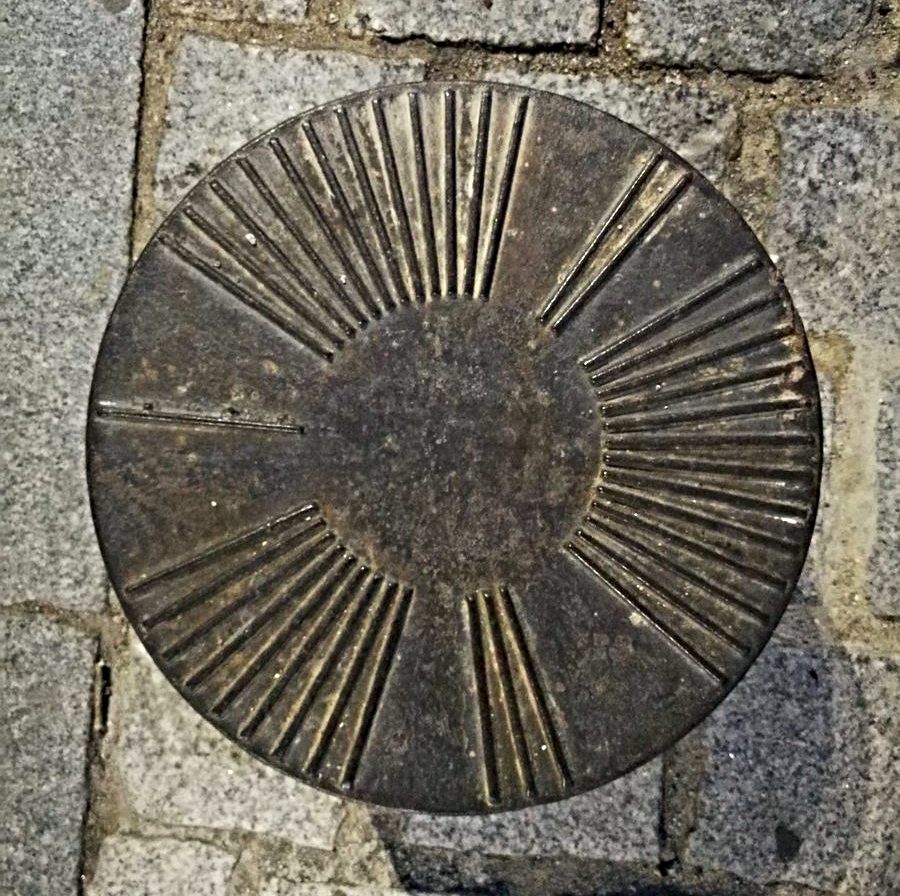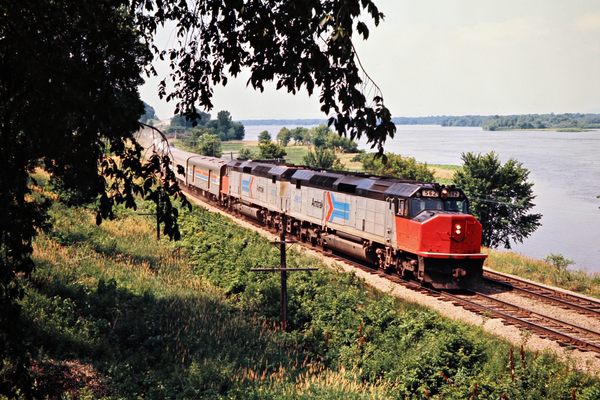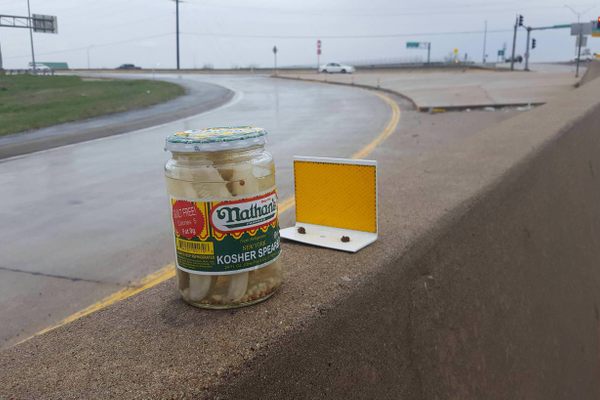There’s a Secret Code Hiding on These Madrid Security Bollards
It took the power of the internet to crack it.

It was one of those hundreds of nondescript iron bollards—the sturdy cylindrical poles that are designed to stop cars from getting in pedestrian areas—stationed across the city of Madrid. To the common observer, there was nothing special about it. But for Joseángel Murcia, there was something different about this particular bollard. And Murcia is not a common observer.
“I was surprised one day driving in my car when I saw a pattern that wasn’t symmetric,” says Murcia, a mathematician and educator. “When I travel, one of the things that I do is to look for geometrical patterns… It’s a little OCD.”
On the top of the bollard in question, Murcia noticed an unusual pattern comprised of 40 lines that would soon be all over Spanish Twitter and featured by dozens of Spanish news outlets. The lines extended from close to the center of the bollard to the border of the circumference. And they were grouped in a strange way: first one line, then a space. Then 12, and another space. Then 2, 13, 3, and 9.

Murcia had long made a habit of taking photos of the geometric patterns he notices, sharing them on his Instagram account, but on this occasion he was driving, so he couldn’t. A few months later he came back to capture it. After taking the picture and counting the lines, he put the numbers in the OEIS sequence database, a site where you can search known mathematical sequences. Nothing matched. Stumped, he turned to social media.
Ayuda, please, ¿alguna hipótesis de por qué los bolardos de la zona del puente de Segovia tienen este patrón: 1, 12, 2, 13, 3, 9?
— Joseángel Murcia (@tocamates) July 26, 2018
¿Un RT? pic.twitter.com/Jq2bq16KJ1
“Help, please, any hypothesis about why the bollards in the area of the Segovia bridge have this pattern: 1, 12, 2, 13, 3, 9?,” his tweet read. To date, the message has accumulated almost 2,000 retweets and more than 600 replies. All kinds of theories arrived. Someone suggested it might have something to do with the arcs of the nearby Segovia Bridge. Or could the answer be related to the spaces between the lines? “60 segments, 60 seconds? Some active, some not,” Rubén Holguera wrote. “Could it be the pattern of repetition of a lighthouse, for example?” Another Twitter user found in the pattern’s shape a hexagon that he related to the Landau–Ramanujan constant, a famous theorem.
Mi hijo dice que está claro, que es así para que no pasen los coches 😜
— Miguel Ángel Miguel (@El_de_gafas) July 27, 2018
Pero si quitamos los “diámetros” del hexágono a partir del 1… quedan 5,6,1,7,6,3,3,5… https://t.co/yOHAB8KPqa
Y aparece… Landau-Ramanujan pa flipar ¿o no?
Lástima el 5 final…
Gracias Joseángel pic.twitter.com/2f5Bx8tZ8X
This being Twitter, there were plenty of jokes, including the theory that it must be related to crop circles. Others just gave up, mystified. “Two hours looking at a bollard like it was a matter of life and death,” said @LizTravel1. “My vote is that is just a decorative design.” One person made a 3D printed replica. Another person wrote a song based on the pattern.
Mira, ni idea. Pero por códigos que no quede: si supones que lo números designan semitonos y lo inviertes, queda una melodía chula xD pic.twitter.com/NsnCwFLrVj
— Almudena M. Castro (@puratura) July 27, 2018
A journalist from Gizmodo en Español put forward a theory that the pattern might be a code from the company that designed the bollard. In a post on their website, that company, Forjas Estilo, explained that the bollard was a model called “Río Bajo” and that “the most extended” explanation would be that the lines have to do with the Fibonacci numbers, a sequence in which every number after the first two is the sum of the two preceding numbers. That explanation didn’t convince many, including Murcia. The pattern didn’t quite match the Fibonacci sequence. “There was a lot of confusion,” he says.
Finally, a week after the company published its first explanation, they posted a follow-up with a big revelation: they had located the designer of the bollard. The 36-year-old Spanish architect Víctor Muñoz Sanz had worked on it 10 years ago, when the Madrid Río park was built alongside the Manzanares river.
“At first, the design just had lines on its sides, something that I designed too, but when I presented it, my bosses told me that the top was too empty,” Muñoz Sanz tells Atlas Obscura, from the Netherlands, where he lives and works as a researcher. “We needed to add something.”
He says he started thinking about the material of the bollard, iron. “Maybe I could do a reference to places where this metal is extracted, I thought. And from there I got to the idea of cities [that are] built for extracting resources, or to be factory-cities,” says Muñoz Sanz.
Using Madrid as the center, Muñoz Sanz drew straight lines pointing to the locations of several such cities. He pointed to Fordlandia, a currently abandoned town in Brazil built by the Ford Motor Company in 1928. He marked the spot of Ivrea, the Italian city where Olivetti is headquartered. And he pointed towards to Zlín, in Czechia, a place that would become a new obsession for him.
“I would eventually write my thesis about the Bata Shoe Company, which started in Zlín,” Muñoz Sanz says.

It was a pretty design and it made for a nice effect in sunlight. It was quickly approved and no one involved gave it another thought until 10 years later, when Muñoz Sanz’s former boss messaged him about the Twitter debate and subsequent media coverage.
“It was kind of mind-blowing to discover what had happened. I was surprised by the imagination of the people. I loved that a woman wrote a piano composition,” the architect says. “We designed these bollards so that they would be something nice, something that wouldn’t go out of fashion, something that remained in the city, but at the same time wouldn’t draw attention.”
Thanks to Joseángel Murcia’s eye (and Twitter), the opposite happened, and a humble bollard had its five minutes of fame. Now the mystery is gone. The mathematician and his daughters from time to time wear t-shirts they had printed with the design from the bollard.
Still, a question does remain, one that might never be answered. “There’s actually only one bollard that correctly points to those cities,” Muñoz Sainz says. The rest were installed without regard to the direction in which the pattern was positioned. At the time, no one cared too much. The bollard’s creator never told anyone the logic behind his design, until now. “And today even I don’t know where the correct one is… It’s been a long time.”










Follow us on Twitter to get the latest on the world's hidden wonders.
Like us on Facebook to get the latest on the world's hidden wonders.
Follow us on Twitter Like us on Facebook